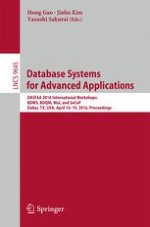This book constitutes the workshop proceedings of the 21st International Conference on Database Systems for Advanced Applications, DASFAA 2016, held in Dallas, TX, USA, in April 2016.
The volume contains 32 full papers (selected from 43 submissions) from 4 workshops, each focusing on a specific area that contributes to the main themes of DASFAA 2016: The Third International Workshop on Semantic Computing and Personalization, SeCoP 2016; the Third International Workshop on Big Data Management and Service, BDMS 2016; the First International Workshop on Big Data Quality Management, BDQM 2016; and the Second International Workshop on Mobile of Internet, MoI 2016.
